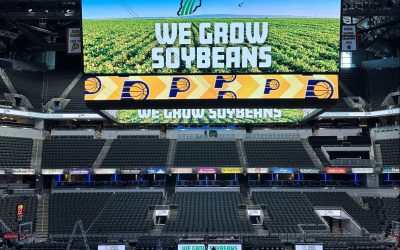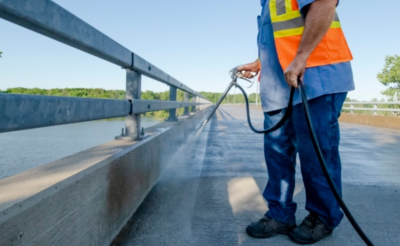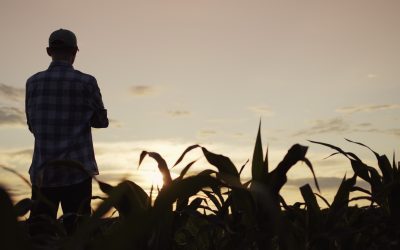Northern Indiana farmer overcomes hardships to serve soybean growers across America
Those who choose to ride bucking horses and bulls soon understand things sometimes don’t work out the way they planned or visioned. When that happens, the only thing you can do is think about what you did wrong, regroup and get back on with a different attitude.
Kendallville, Ind., farmer Tom Griffiths understands this principle both figuratively and literary. For many years, Griffiths has interacted with and worked for Indiana farmers in several roles. From 2010-2018 he served as one of 24 board members elected to the Indiana Soybean Alliance (ISA) Board of Directors. In 2017, he began representing all U.S. soybean growers as a director on the United Soybean Board (USB). He was appointed for his final three-year term on the USB board in 2023.
For many years Griffiths had no plans of ever being a farmer. He was raised on a Noble County farm near the town of Avilla. Griffiths described his family’s operation as a “large grain and livestock farm.” He said his family worked hard, and “and it was a wonderful life. We didn’t want for anything.”
As a senior in high school in the fall of 1980, Griffiths’ father, Glen, was diagnosed with cancer. In January 1981, Glen died.
“That spring was kind of a blur for me,” Griffiths said. “Listening to the excitement of my classmates with graduation only weeks away; where they would attend college, and who they would take to the prom. All I could think about was my mom’s broken heart; the inevitability that we would have to sell the farm. Even though I thought we had plenty, I soon learned the bank owned the majority of everything.
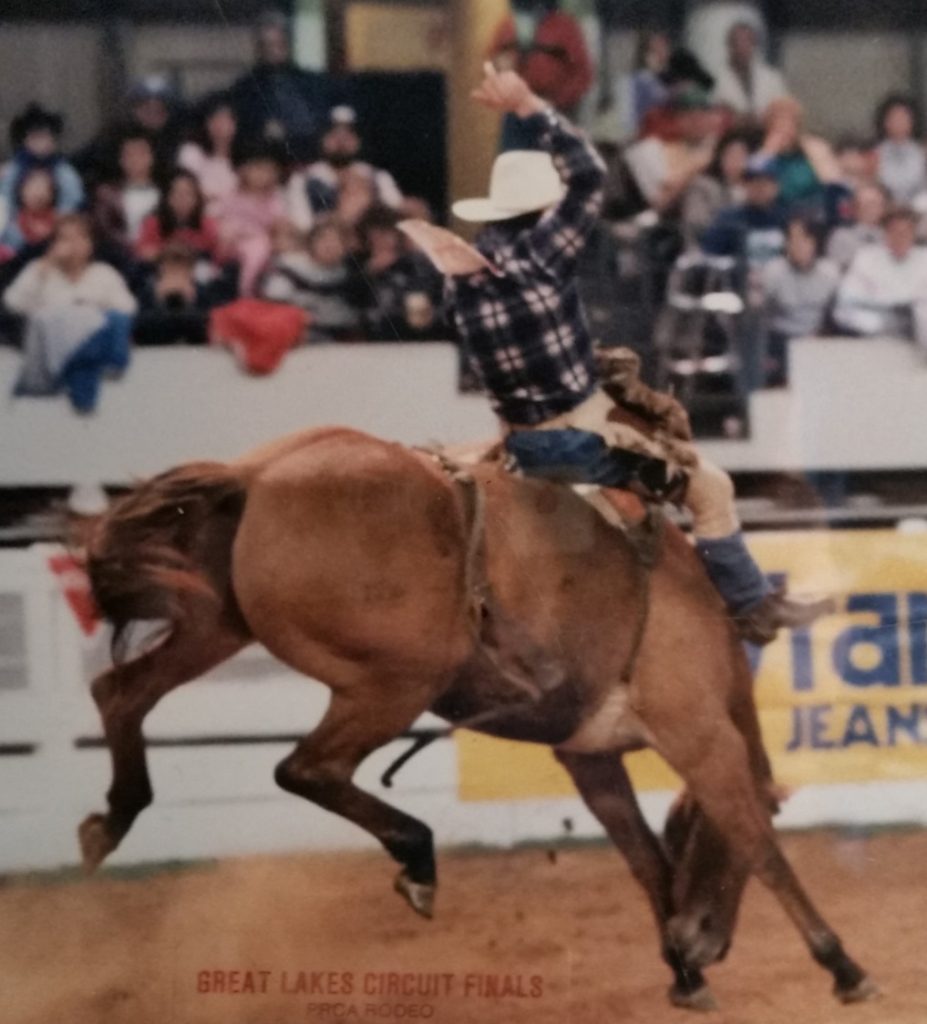
“My parents did a good job of keeping their financial status away from me – not to mention my mom’s health was deteriorating fast. We soon sold the farm, and it wasn’t long until Mom was reunited with my dad. At this point, the last thing I wanted to do was become a farmer. After the smoke cleared and banks and hospitals were paid, my inheritance was somewhere around $200 and a 1971 Pontiac Catalina. And I was homeless. To see two people work that hard all their life and die with nothing but worry was something I wanted no part of.”
A professional cowboy
Griffiths is eternally grateful to a family friend who understood his situation and offered him a house to live in rent-free. The house belonged to an elderly gentleman who moved to an assisted-living facility.
“This gave me that opportunity to regroup,” he said. Griffiths received a degree in metallurgical engineering on a scholarship he earned in high school and worked as a metal fabricator.
But a wild spirit inside him was leading him elsewhere. “So, I became a professional Cowboy,” he said.
Griffiths smiled and added that people are often surprised to hear he traveled the rodeo circuit. He competed in three events – bareback horses, saddle broncs and bull riding. “You know I worked all week then traveled to rodeos all weekend with little or no sleep to make sure I made it to work on Monday morning,” he said. “I traveled a lot; the money was okay. There was no lavish lifestyle for me. I spent my nights in that Catalina. I loved that car. I saved everything. These days I stay in nicer hotels. ISA and USB want to keep their directors safe. One of the things I do every time I travel for the board is walk outside of our hotel and know there is another part of town – a part of town where things are not so glamorous. You might say the other side of the tracks. I know I’ve been there, and I know those people.”
Griffiths doesn’t refer to himself as a cowboy anymore. That was a long time ago, and he’s retired. “I was lucky I really didn’t have any major injuries, but all those little ones add up, and I feel all of them now,” he admitted.
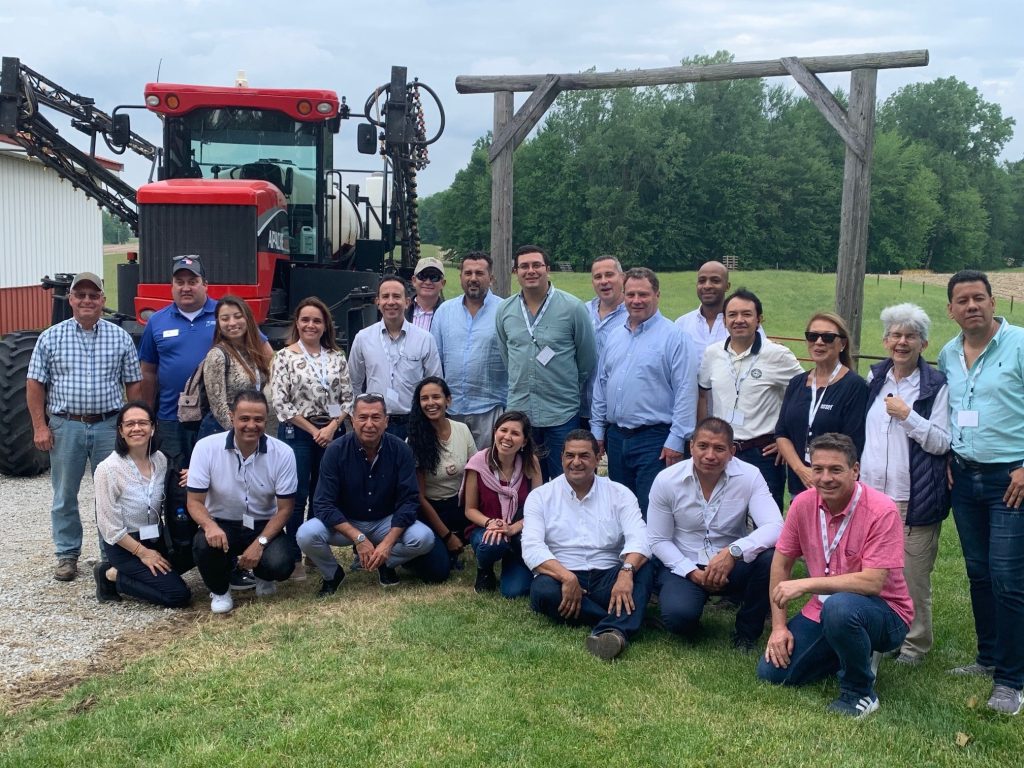
Although rodeo life was a truly fantastic experience, Griffiths always knew it was a short-term career. “Being a professional cowboy was a lot of fun, but I was smart enough to know your longevity in a sport like that is limited,” Griffiths explained. “At some point, I would need to grow up.”
Returning to agriculture
Griffiths married his high school girlfriend in December 1988. “Yeah, she stayed that long,” he said. “We always knew we wanted a family, and there is no better place to raise one than on a farm.”
In August 1988, he saw an ad in the paper for a bank-owned property that was taking sealed bids.
“I didn’t have any credit, no co-signer, but I had money – only not enough,” Griffiths said. “That’s when another friend of my parents stepped in. He was the loan officer at the bank and found a way to lend me what I needed to honor my sealed bid.”
Griffiths made himself a promise that he would never be in the same financial position as his parents, and he would never make a decision that would keep him awake at night. With no one to fall back on, financial mistakes were not an option. Griffiths won that bidding process and suddenly owned 80 acres two months before he and Kim were married. Those acres are the anchor to his 350-acre farm that he owns and operates today along with an additional 200 rented acres. Slowly and deliberately, Griffiths has bought ground near his 80 acres to grow his farm.
That is how Arrow G Farms got its start. In addition to soybeans, corn and hay, Griffiths also has a small feedlot of cattle. He grew up only five miles from where he now lives. In 1994, the Griffiths had their only child, Glen. Although Griffiths didn’t plan to farm, and didn’t plan to live in Noble County, Griffiths is pleased with his decisions.
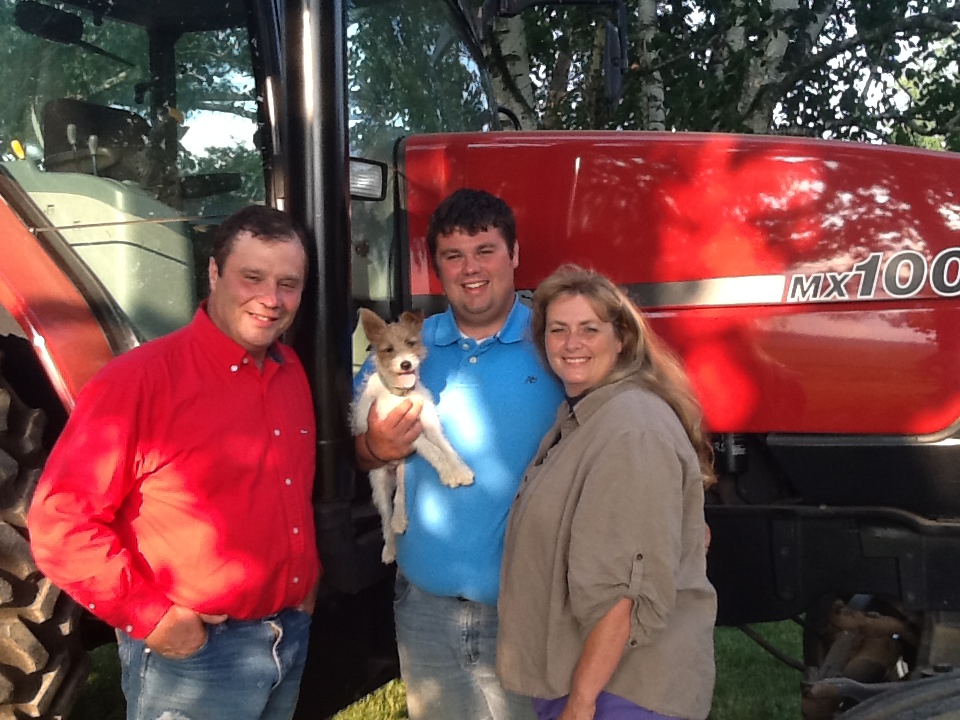
“Kim and I were right about raising our son on a farm; there is no better place,” he added.
Kim has an off-farm job as a teacher. Glen is married and lives in Fort Wayne with his wife, Abby. Glen works as a seed salesman for Wyckoff Hybrids and runs crop applicators for a grain elevator in Ohio.
Investigating the checkoff
Although he is a supporter of Indiana’s checkoff, there was a time Griffiths was skeptical about who the checkoff was and what they were doing with farmers’ money, more importantly, his money.
“I would say around 15 years ago I was reading The Farmers Exchange, and I saw were the Indiana Soybean Alliance was hosting a free breakfast near Shipshwana, a town where we hauled hay every week,” Griffiths said. “I figured, if nothing else, haul a load of hay. I could get some of my checkoff back with their breakfast and maybe score a couple of doughnuts.”
He said ISA was taking applications for farmers interested in becoming board members. “I didn’t really know where my money was going, so I filled out an application.” he said.
After nine years on the ISA board, two as chairman and seven years on the USB board, Griffiths said he’s earned an education and gained respect for the soybean checkoff program. He noted that checkoff work has created new products like high oleic soybeans that provide a premium per bushel for Indiana farmers. The checkoff has invested in on-farm research that has led to yields increasing 25-30 bushels per acre in a short period of time. And, perhaps most importantly, checkoff works with partners such as the U.S. Soybean Export Council to find new markets for our soybeans.
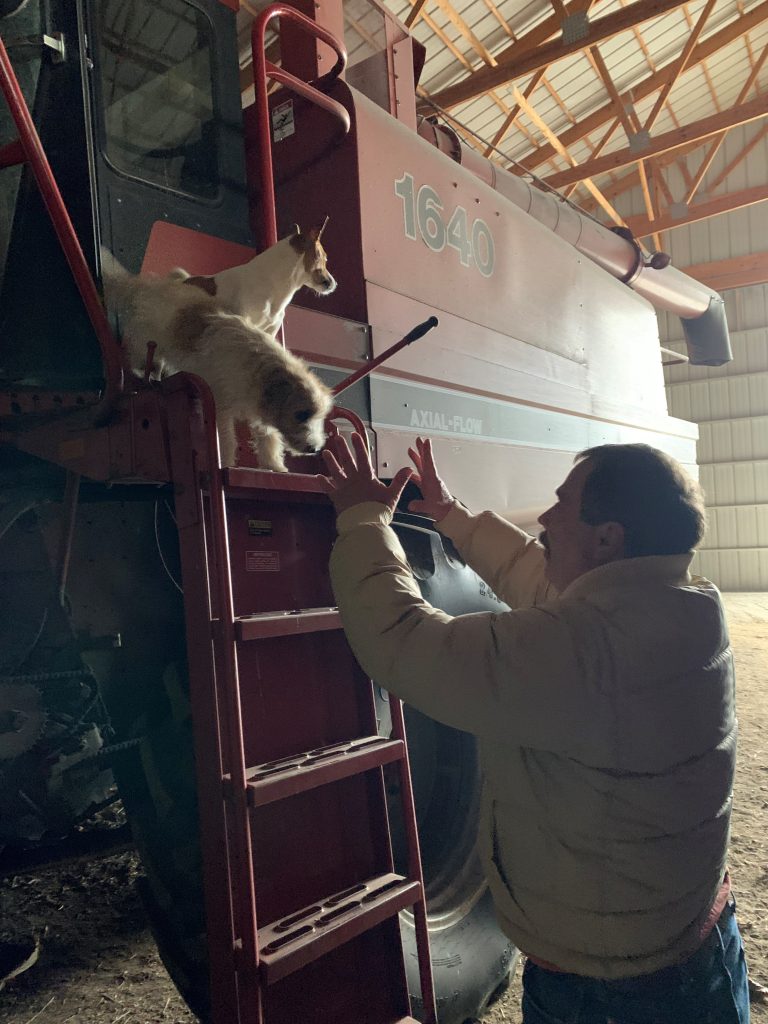
“Stressing the fact if your end users are truly interested in a complete, sustainably sourced soybean, then you need look to look no further,” Griffiths said of checkoff work. “U.S. soybeans are the most sustainably raised and most complete soybean in the world.”
He said ISA and USB have poultry and livestock partners, as well.
Poultry is the No. 1 customer of U.S. soybeans – consuming nearly 67 percent of the crop. The USA Poultry and Egg Export Council helps to create worldwide markets for U.S. eggs and poultry products. The U.S. Meat Export Federation exporting soybeans though meat products such as beef, pork and lamb. These value-added products are vital to the profitability to U.S. soybean farmers, Griffiths explained.
Griffiths, 61, doesn’t think he will pursue any other positions with checkoff commodities organizations. “I believe in term limits – even my own,” he said.
Griffiths sees U.S. agriculture at a point where the road splits. There are two distinct paths ahead. One is extremely positive, and the other one is kind of dark. Griffiths believes agriculture, at this moment, is going down the wrong road.
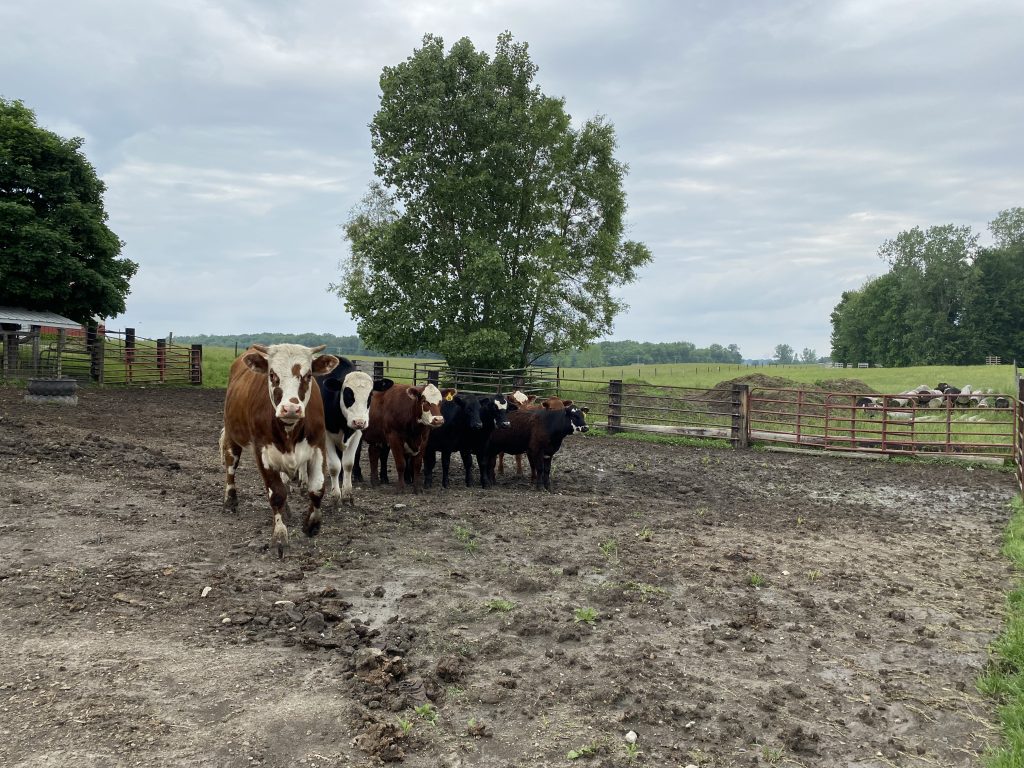
Generally, that road includes a focus on out-producing other countries instead of growing a better crop, more tailored to consumers’ wishes. Also, the wrong road includes commodity groups competing with each other instead of finding unity on legislative issues.
Unity is the key to the positive path, he said. Griffiths added that farmers should define the terms they live by – such as sustainability. He believes agriculture would be favorably compared to the airline business, the automotive industry, warehouse centers and others.
“People who don’t know me usually think of me as a pessimist,” he said. “My past has made me more of a realist with a little different thought process. I do feel agriculture will choose the right path with a brighter future. I just never said it would be easy.”
Posted: March 23, 2024
Category: Indiana Corn and Soybean Post - March 2024, ISA, News


